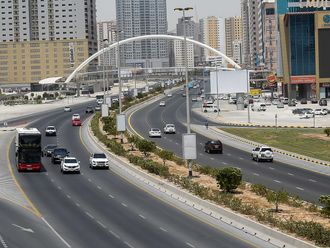
Dubai
The average mall in Dubai consumes 73 per cent more energy per square metre per year than a similar mall in the US, a study by sustainability consultants in Dubai revealed.
The Middle East’s first sustainability shopping mall benchmarking project, endorsed by the Dubai Supreme Council of Energy (DSCE), involving seven of the largest and most popular malls in Dubai showed that the average shopping mall used 511kilowatt-hour per square metre per year.
Malls in Europe, however, use less than 50 per cent of this at 192kwh/sq.m. per year. Swedish and Norwegian shopping malls have a usage of 391kwh/sq.m. per year.
The key findings of the study by Farnek were recently presented to a Mall Stakeholders Group consisting of facilities management and retail professionals during the RetrofitTech Dubai Summit this week.
Reducing demand on energy and water and making malls and existing buildings in the Dubai more efficient through retrofitting is part of the Demand Side Management Strategy of the DSCE by 2030.
Energy audits, studying water consumption and waste generation are therefore important to determine key areas in malls where improvements can be made and reduction in consumption and costs can be implemented using best practices and latest technology.
Sandrine Le Biavant, Farnek Director of Consultancy, said 15 Dubai malls were contacted to participate in the study but only seven were able to give ready data. The study looked at 2015-2016 data of the mall’s common, leasable, and gross floor area; data from electricity and cooling meters, and chiller efficiency.
“It’s important to start the data management in the malls and have an idea whether they are saving or not. In some of the malls that participated in the study, they already have energy managers in place. They have people dedicated to monitoring these aspects,” Le Biavant told Gulf News.
Le Biavant said one of the seven malls outperformed the rest because it already had a green building certification. Malls that perform well keep saving while some under-performing malls, or those above average benchmark, do not report any savings.
In terms of energy, the study said mall operators can save at least five per cent of their energy consumption — this is equivalent to providing electricity to 10 offices running with 150 people every year.
For water, achieving eight per cent savings is possible. A mall that saves an average of five per cent of its water consumption can save water equivalent to eight Olympic-size swimming pools, according to the report.
All the malls were rated good for waste segregation compared to other types of facilities such as residential areas, offices, and hotels.
Le Biavant said the results of the study were presented to the seven participating malls and many of them said they will incorporate the recommendations in their strategies to make their malls more energy and water efficient.
Le Biavant encouraged all the other malls in the country and the region to participate in the second phase of the study. She called on shopping centres and community centres — a minimum of 50 — to participate and share their 2017 and 2016 data.
Participating in the study is free. For more information, contact Sandrine.lebiavant@farnek.com.
Benchmarking malls for sustainability
■ Farnek evaluated and benchmarked seven largest and most popular enclosed and open air malls in Dubai for their energy, waste and water use so as to suggest where they can make cost savings.
RESULTS (ON AVERAGE)
ENERGY
511 kWh per square metre, per year
(73% more than enclosed malls in the US)
WATER USE
10.86 litres per visitor
WASTE
0.52kg per visitor
WASTE DIVERSION
24% from landll
ENERGY PERFORMANCE OF MALLS
UAE (enclosed): 511kWh/ square metre
US (enclosed, including tenants): 250kWh/square metre
US (enclosed, excluding tenants): 63kWh/square metre
Europe: 192kWh/square metre
Sweden: 391kWh/square metre
UNDERPERFORMING MALLS
Consume twice the energy and water consumed by best performing malls.
Generate 4.3 times the amount of waste per visitor, compared to best performing malls.
What malls do to reduce their impact:
Energy
- Air curtains for reducing the heat gain from the entrance
- Window films for domes
- Lighting: Shifting to LED lights
- Air-conditioning equipment management
- Maintaining a temperature at a comfort level of 22-24 degrees Celsius
- Managing the HVAC system and lighting at non-operating hours
- Optimising the HVAC equipment efficiency
Water
- Water aerators in toilets taps, shattafsand toilet flushing (double flush option or sensors)
- Condensate water recycling
- Use of TSE water for irrigation
- Cleaning schedule management
- Water features management
Source; Farnek’s First Shopping Mall Benchmarking Project in Dubai












